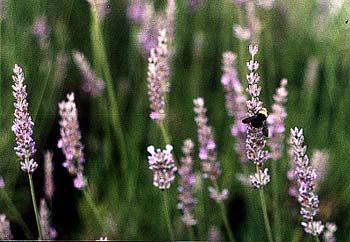Herbs
Parsley – Extra Curled Dwarf


· 'Extra Curled Dwarf' is a Curly parsley variety in the Petroselinum genus with a scientific name of Petroselinum crispum.
· Finely cut, curly leaves, compact plants.
· Wonderful flavor and an excellent source of vitamins.
· Full Sun, Part Sun
· Height: 10-12 inches
· Days to Maturity: 40-60 days
· Sowing Method: Direct Sow/Indoor Sow
· Try to aim for a seed spacing of at least 0.98" and sow at a depth of around 0.25".
· Position in a partial sun location.
· Water moderately.
· Extra Curled Dwarf is thought of as hardy, so this plant will survive close to or on freezing temperatures.
· Use USDA Hardiness Zones 5 - 9 as your guideline for the appropriate climate for this plant.
· Keep the PH of your soil between the range of 5.6 and 6.0 as Extra Curled Dwarf likes to be in acidic soil.
Parsley – Single Italian Plain Leaf


· Single Italian Plain-Leafed is part of the Petroselinum genus and is a flat leaf parsley variety. Its scientific name is Petroselinum crispum var. neapolitanum 'Single Italian Plain-Leafed'.
· Ensure a distance of 7.80" between seeds when sowing - look to sow at a depth of approximately 0.25".
· Single Italian Plain-Leafed is thought of as hardy, so this plant will survive close to or on freezing temperatures.
· Use USDA Hardiness Zones 5 - 9 as your guideline for the appropriate climate for this plant.
· Grows best in a soil PH of between 5.6 and 6.0 meaning it does best in acidic soil.
Rosemary


· Common name for Rosmarinus officinalis, a hardy evergreen sub-shrub grown chiefly for its aromatic leaves which are used in culinary seasoning and which yield an oil once used in medicine.
· Small light blue flowers are borne in April or May, in loose clusters that spring from the leaf axils.
· The foliage is white and woolly on the underside and dark and shiny above.
· Plants can grow to a height of 6 feet and last for years if given winter protection.
· Rosemary prefers dry, well-drained soil and in the South and Pacific Coast States, where soil is dry and rocky, they are planted as hedges.
· There is also a low-growing or prostrate variety.
· Rosemary grows well with occasional watering, and does much better where the soil is alkaline.
· All varieties prefer full sun and most can tolerate slightly shady areas.
· Rosemary propagates easily by taking six inch long stem cuttings that are stuck in a mixture of sand, loam, and leaf mold, ideally in a controlled environment such as a greenhouse or cold frame.
True Lavender


· Scientific Name: Lavandula angustifolia P. Mill.
Synonym: Lavandula officinalis, Lavandula spica, Lavandula vera
Family: Lamiaceae
Synonym: Lavandula officinalis, Lavandula spica, Lavandula vera
Family: Lamiaceae
· Recommended Temperature Zone: USDA: 5-9
· Heat Tolerance: Resists summer heat in low deserts when established
· Sun Exposure: Full sun
· Origin: Western Mediterranean basin, in rocky, calcareous areas
· Growth Habits: Evergreen shrub, 2 to 4 feet tall and wide; narrow grey leaves, with smooth margins, up to 1.6 inches long; woolly when juvenile
· Watering Needs: Moderate water, well-drained soil
· Propagation: Softwood cuttings in spring, side shoot cuttings taken in the fall and kept in a cold frame, layering, division, since the seeds are not always germinating very well and don't come true to the varieties.
Lavender Lady (Lavanda)
· It flowers the first year from seed, so this beautiful herb will grow as an annual.
· It's excellent for edging, low hedges and containers.
· Height 16".
· Grows best in full sun.
· Zone: 6-10
· Sun: Full Sun
· Height: 16 inches
· Spread: 16 inches
· Uses: Beds, Borders, Container, Dried Flowers
· Sowing Method: Indoor Sow
· Bloom Season: Spring, Summer
Monarda – Bee Balm

· Monarda is a small genus consisting of only fifteen species, but offers many different cultivars of these species.
· These plants are found in dry scrub, prairies, and woodlands in North America.
· The square stems bear toothed to solid leaves that are normally aromatic, especially when brushed.
· In summer, tubular flowers are produced in colors ranging from white to violet.
· Flowers are borne in a circular fashion around the square stems.
· Plant in a well-drained soil that has been enriched with organic matter or already has adequate amounts of organic matter.
· Make sure the soil is within the preferred pH range of 5.5.- 7.0
· Monarda plants prefer partially shaded to full sun locations.
· Keep soil moist at all times for best display.
· These are submarginal plants that prefer moist humus and are opposed to the dry fill dirt most developed properties are leveled with.



No comments:
Post a Comment